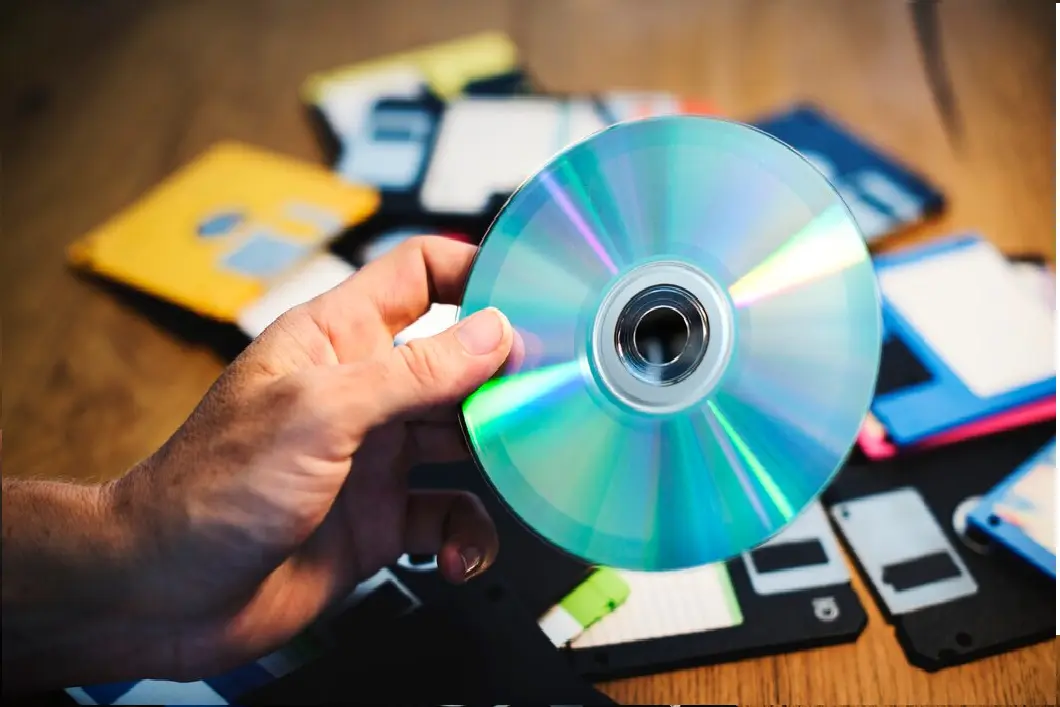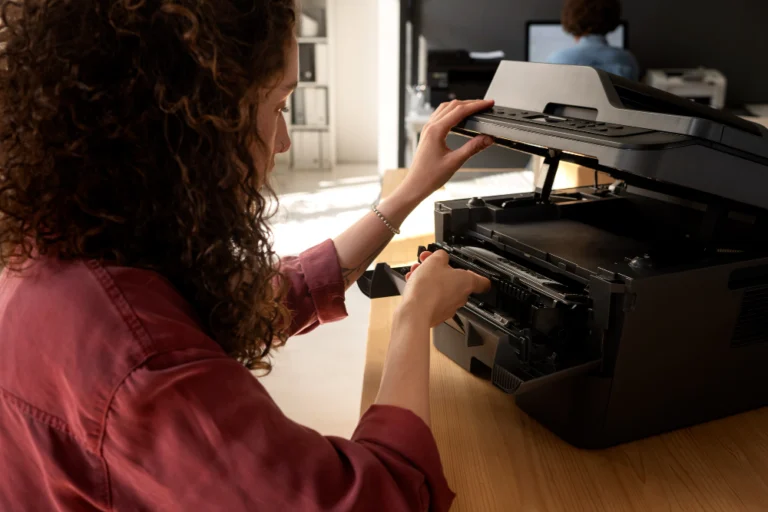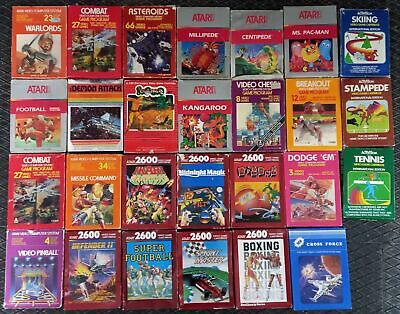
Long before cloud storage, high-speed internet, and app stores became the norm, there was a time when software came packaged in square plastic disks and computers ran on sheer patience. Welcome to the age of the floppy disk software culture, a bygone era where sharing programs, installing games, and running operating systems revolved around thin magnetic disks with limited capacity but limitless potential.
This period was not just a technical phase—it was a cultural moment that shaped the way people experienced, shared, and preserved software. In this blog, we’ll dive into the world of vintage computer software, explore software distribution on floppy disks, and rediscover the charm of floppy disk games.
Let’s answer the question: What was software distribution like during the floppy disk era? And why does the world still carry a sense of floppy disk nostalgia and retro software preservation?

1. The Golden Age of the Floppy Disk
The floppy disk was more than just a data storage device—it was a symbol of innovation. First introduced by IBM in the 1970s, the early 8-inch disks eventually gave way to the more iconic 5.25-inch and 3.5-inch versions by the 1980s and 90s. These disks became the standard format for software distribution on floppy disks, enabling developers and publishers to share their creations with the world.
At a time when internet connectivity was either non-existent or too slow to transmit large files, floppy disks were essential. A single application or game could span multiple disks. Opening a new box of software often meant flipping through a stack labeled “Disk 1 of 7”, “Disk 2 of 7”, and so on.
This was the essence of the floppy disk software culture—a hands-on, tangible experience of computing that required patience, curiosity, and technical know-how.
2. Vintage Computer Software: A Hands-On Experience
Today’s users install apps with a single tap. In contrast, users of vintage computer software had a much more involved experience. To install a program, you had to:
- Insert the correct floppy disk.
- Run installation commands, usually via command line.
- Swap disks during installation prompts.
- Hope your system met the memory and compatibility requirements.
Although the process was often cumbersome, it resulted in a much more profound knowledge of the entire software and hardware ecosystem. People learned about file systems, boot disks, and operating system versions simply by necessity. It was a time when computer literacy wasn’t optional—it was the only way to get things done.
Whether it was early word processors, spreadsheet programs, or graphic design tools, vintage computer software brought computing to life in living rooms, bedrooms, and school labs across the globe.
3. What Was Software Distribution Like During the Floppy Disk Era?
To answer what was software distribution like during the floppy disk era?, one must consider the infrastructure and economics of that time.
Distribution Channels:
- Retail Stores: Software was sold in physical boxes with printed manuals and several floppy disks inside.
- Mail Order Catalogs: Companies sent software directly to users through postal services. Users would browse catalogs and place orders via phone or mail.
- User Groups and BBS: Enthusiasts distributed shareware via Bulletin Board Systems (BBS). Floppy disks were often exchanged at computer club meetings or sent by post.
- Magazine Cover Disks: Popular tech magazines included demo versions of games and tools on floppy disks.
Piracy was rampant too. Copying disks was as simple as using the DOS DISKCOPY command or third-party tools. This was both a threat and a driver of innovation, as it pushed developers to create copy protection techniques—many of which are now a fascinating part of digital history.

4. Floppy Disk Games: The Birth of Digital Entertainment
No discussion of floppy disks is complete without diving into the world of floppy disk games. These titles marked the dawn of the video game industry and laid the foundation for today’s gaming giants.
Classics from the Disk Age
- Prince of Persia (1989): This title represented a major breakthrough with its incredibly fluid character animation and innovative puzzle-platformer gameplay.
- Doom (1993): Originally distributed as shareware on floppy disks—one of the most iconic shooters of all time.
- Monkey Island: A series that brought humor and storytelling to adventure gaming.
- SimCity: City-building simulation that captivated a generation.
Installing these games often meant loading multiple disks and waiting several minutes for the data to transfer. But once loaded, these games provided unforgettable experiences—despite their pixelated graphics and limited sound capabilities.
The beauty of floppy disk-based games and programs from the 90s was their creativity. Developers were forced to work within tight constraints (often under 1.44MB of storage), leading to elegant, efficient code and ingenious design choices.
5. Floppy Disk-Based Programs from the 90s
The 90s were a golden age not just for games but also for a wide range of utilities and creative software distributed on floppy disks.
Notable Programs:
- WordPerfect: One of the most popular word processors of the era.
- Lotus 1-2-3: This groundbreaking spreadsheet application was the dominant industry standard long before the rise of Microsoft Excel.
- MS-DOS Utilities: Disk management, antivirus tools, and file compressors all came via floppy.
- Paint programs and early design tools: From simple pixel art programs to more advanced drafting tools, these floppy-distributed apps opened creative doors.
Floppy disks also played a crucial role in the early versions of Windows, such as Windows 3.1, which required over a dozen disks just for installation. For many users, installing a full OS from floppy disks was a rite of passage.
6. Floppy Disk Nostalgia and Retro Software Preservation
Why do people still feel so attached to these fragile, obsolete disks? That’s the heart of floppy disk nostalgia and retro software preservation.
The Emotional Connection
For a large number of people, the floppy disk served as their primary introduction to the world of personal computing. The clunky sound of a disk drive, the label scribbled in permanent marker, the tense moments hoping the disk wasn’t corrupted—these experiences are etched into memory. There’s a tactile, analog pleasure in handling a floppy that digital files lack.
The Need for Preservation
With time, these disks degrade. Magnetic fields fade. Hardware to read them becomes rarer. That’s why retro software preservation has become a crucial movement among historians, archivists, and hobbyists.
Websites like the Internet Archive, Vintage Software Repository, and forums like Vogons work tirelessly to preserve and emulate old software. Emulation software, such as DOSBox, enables people today to experience these legacy programs on modern computers, thereby preserving the essence of the floppy disk era.
Preservation is not just about saving games or tools—it’s about capturing a cultural moment. It’s about remembering how far we’ve come and how different the digital journey once was.
7. The Limitations (and Charms) of the Floppy Era
Limited Storage
The most common floppy disk formats stored:
- 360 KB (5.25-inch)
- 720 KB (Double Density 3.5-inch)
- 1.44 MB (High-Density 3.5-inch)
This stands in stark contrast to contemporary USB drives, which are capable of storing terabytes of information. Yet, the constraints forced developers to be resourceful. Every kilobyte mattered. Programs were streamlined, and documentation was often included on separate physical booklets rather than bloating the software package.
Vulnerability
Floppies were fragile. Exposure to magnets, dust, or even mild heat could render them unreadable. Labels peeled off. Disks got corrupted. Yet, despite these risks, millions relied on them daily—for homework, business presentations, and of course, games.
8. The Cultural Footprint of Floppy Disks
The floppy disk software culture had an unexpected effect: it created a generation of tinkerers, coders, and problem-solvers. You couldn’t just “Google it.” You had to figure things out, ask peers, or read through printed manuals.
This do-it-yourself attitude seeded much of today’s open-source culture. People shared programs, wrote batch files, created boot disks, and exchanged tips on forums and BBS boards.
Many software developers, engineers, and designers today trace their roots to this hands-on, floppy-disk era of computing. It was raw, imperfect, and incredibly inspiring.
9. From Floppy Disks to the Cloud: What We Gained and Lost
What We Gained:
- Instant access to software and updates
- Cloud backup and file redundancy
- Massive storage and advanced multimedia capabilities
- Seamless integration across devices
What We Lost:
- Tangibility: The physical presence of software is gone.
- Skill-building: Users no longer need to understand how software works under the hood.
- Community: The local sharing of disks created real-world bonds and communities.
While today’s cloud systems offer unmatched convenience, there’s something nostalgic about flipping through a shoebox full of floppies, each labeled in fading ink, holding forgotten games, half-written stories, or saved school assignments.
Conclusion: Why the Floppy Era Still Matters
The era of floppy disk software culture wasn’t just a technological stepping stone—it was a lifestyle, a mindset, and a unique chapter in digital history.
Whether we’re talking about vintage computer software, the methods of software distribution on floppy disks, or the charm of floppy disk-based games and programs from the 90s, we’re also reflecting on a time when computers weren’t just tools—they were portals to new skills, friendships, and creative expression.
Answering what was software distribution like during the floppy disk era? takes us beyond the mechanics and into the human stories behind it. And as floppy disk nostalgia and retro software preservation movements continue to grow, it’s clear that people don’t just remember floppy disks—they cherish them.
In an age where digital content is intangible, ephemeral, and often disposable, the humble floppy disk reminds us of a time when every file felt precious and every install was an adventure.






